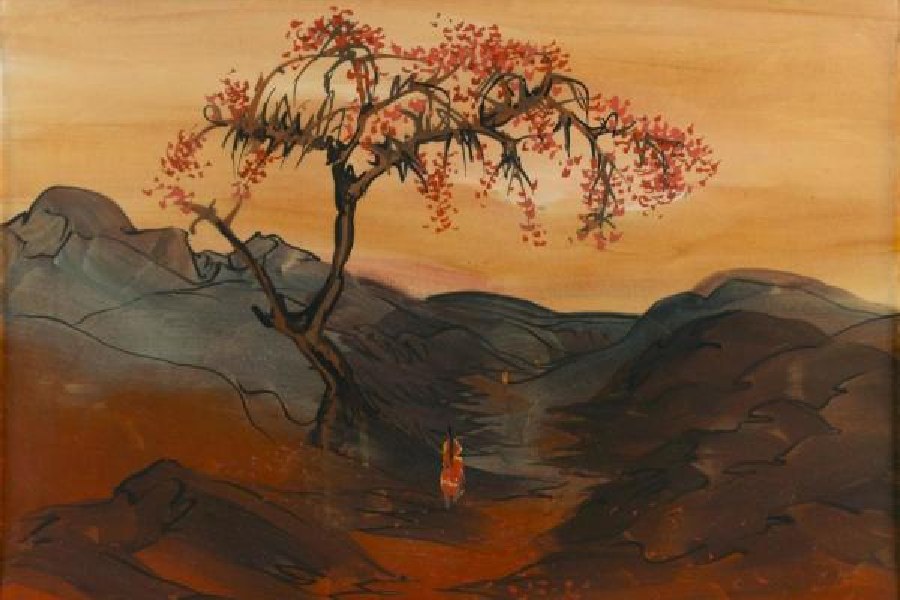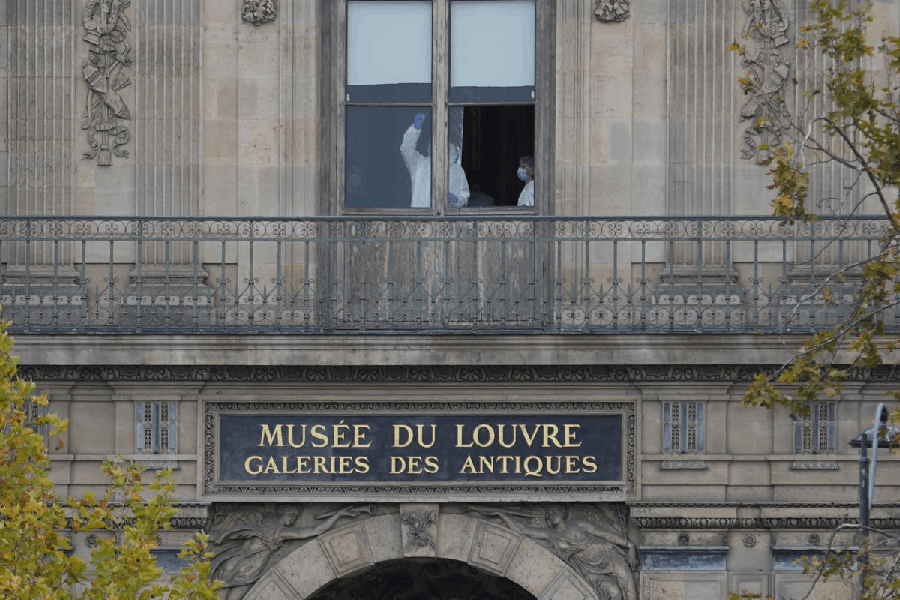The brush is mightier than the sword, Gopal Ghose had famously claimed. His legacy is proof that he was right. This pioneer of Indian modern art was born in 1913, and his life was shaped by the tumultuous events before and after Independence — from the man-made Bengal famine of 1943 to the horrors of communal violence and Partition — which led him to turn to nature for solace. His retrospective, Flower of Fire: The Life & Art of Gopal Ghose, organised by the DAG and held at The Alipore Museum, outlined Ghose’s journey, both personal and artistic, from his birth in Calcutta in 1913, through his studies in Jaipur and Madras, to his return and the founding of the Calcutta Group, culminating in his groundbreaking contributions to art until his passing in 1980. The exhibition drew heavily from the research left behind by Ghose’s confidant, W.G. Archer, a British officer in the Indian Civil Service with a deep interest in Indian folk art. During their time together, Archer spent several days closely engaging with the artist, carefully recording his thoughts, philosophies, and reflections on art, life, and his personal experiences. Although Archer had planned to write an essay about Ghose, the work was never finished, resulting instead in a valuable collection of notes that trace Ghose’s artistic evolution. Archer’s unfinished work enriched this show.
A symphony of colours, a dance of lines, and vast, unfolding landscapes filled the gallery space along with personal journals and sketchbooks from the DAG’s archive. Ghose’s landscapes — particularly those created in Dumka, Jharkhand, during 1947-48 — are some of his most evocative works, offering a glimpse into his ability to channel the living soul of nature. While scholars have often found his idiom to be infused with the spirit of Fauvism and Post-Impressionism, it is impossible to box Ghose into a single artistic style — there were, for instance, obvious likenesses with his teachers, Sailendranath Dey, Abanindranath Tagore and Nandalal Bose. He also immersed himself in the British watercolour tradition — drawing inspiration from artists like Constable — while simultaneously exploring the serene elegance of Chinese landscape painting. And yet, Ghose wielded the intensity of primary colours in a way that was uniquely his own, blending them into captivating hues that paid homage to the rural landscapes he felt irresistibly drawn to. It seemed as though each blade of grass, each sunlit field, stirred something deep within him.
Although watercolours and landscapes were his most enduring passions, sketching remained a loyal and constant companion. Ghose eagerly filled his sketchbooks with the personal anguish that often goes unnoticed in his larger works. Whether reflecting on the communal riots, the Bengal famine, or his time spent in a mental hospital, his sketches — made with pen, pencil, and even sketch pen — reveal the depth of his inner turmoil. These raw, unfiltered depictions give us a rare look at the torment that shaped his art. Yet, much like Vincent van Gogh, he took his suffering and transformed it into ecstatic, life-affirming works of art that celebrate nature’s beauty. His ability to convert personal pain into such vibrant expression demonstrates the power of the artist’s spirit and the resilience to turn hardship into creation.
Modernism is recognised for the singular connection it creates between contemporary sensibilities and classical forms. Navigating these two elements, both instinctively and emotionally, has become a challenge in our increasingly mechanised world of image production. In Ghose’s works, we witness the human touch that elevates nature to the core of our consciousness, shifting it from an object to be conquered into something that resides within us, as a subject of reverence and contemplation.











